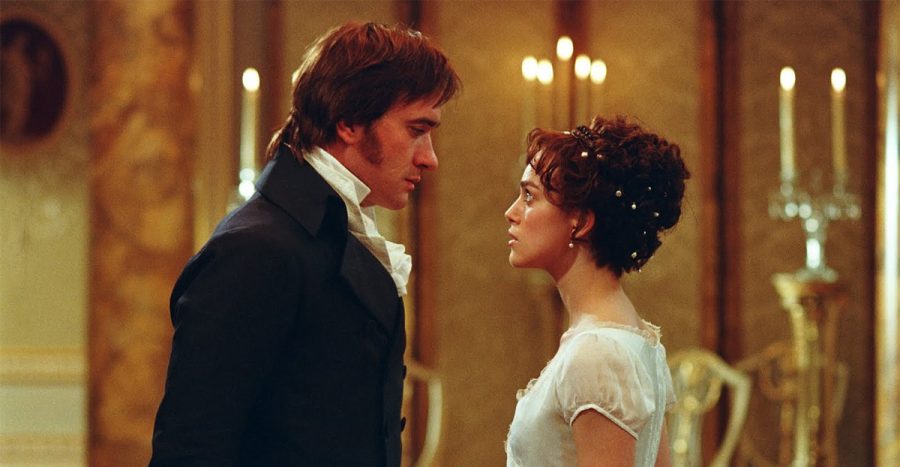Pride and Prejudice: The People of the Past Are Still People
Mr. Darcy and Elizabeth Bennet (left to right) pictured in a ballroom in the 2005 movie adaptation of Pride and Prejudice, directed by Joe Wright.
June 9, 2023
Pride and Prejudice made every 19th-century writer envy Jane Austen’s brilliance born from boldness—a story following a woman with evident intelligence and preferences in marriage, how unfathomable! The success of such a book was outrageous, even unorthodox. And yet, with characters who could have breathed the same air we do, Austen created a story about human beings and their vulnerabilities that has not been eroded by time. In opulent ballrooms and gowns that have been pleated a million times over, the five Bennet sisters live for the purpose of marriage alone, but as this story unfolds, you’ll find that the dated language does not equate to dated behavior.
You may be surprised to learn that the people who once wore feathered hats and traveled by horse-drawn carriages are still people. We often define humanity by the standard of the humans we typically surround ourselves with, but we forget that humans, along with their deep connections of love, have remained on Earth for millions of years. When Jane Austen sought to write a romance novel in 1797, she molded her story around humans—the romance was a side quest. In modern literature, we tend to forget the value of character-driven novels because we are drawn to easily gratifying stories that have already been told a million times before. Every romance novel would follow the exact same premise if not for uniquely crafted characters, while Austen delivers a story that has stood the test of time.
Elizabeth Bennet, the second oldest daughter of the five born to her mother, does not associate herself with her sisters’ frivolous attempts at impressing men of high caliber. Despite their lower standing in aristocratic society, her sisters often act as if a certain extent of attention is owed to them, and Elizabeth finds herself humiliatingly attached to them by the hip, unable to escape their ignorant behavior. When she catches the attention of Mr. Darcy, an extraordinarily rich but equally insolent man, her disgust is immeasurable. Although the enemies-to-lovers trope indicates an apparent ending to this book, the appeal ultimately lies in Elizabeth’s transformation as a character. Her inherent vanity and her own ignorance, comparable to that of her sisters, are buried within many layers of conceit that slowly shed like rose petals abandoning the core of their nourishment. Although the story is painfully slow at first, everything scaffolds up to a single pivotal moment, at which everything clicks together in a colorful epiphany.
When I read this book, I was astonished by the fact that somehow, despite the gruelingly slow start, and the archaic language that was jumbled and twisted around in my mind, I still hungered for more. As the language began to unscramble, my pace quickened. As the story accelerated, I sat with a hand over my gaping mouth, absorbing every last word. Two weeks after I first began reading it, everything made sense. This book is exhilarating. It’s rewarding. It smiles and says, “Thank you for being patient. Now hang onto your seat before the earth beneath you crumbles into nothing.” When you read a book as difficult as this one, you’re passing a threshold. Pride and Prejudice can appeal to any given reader for its genius in creating something that many modern romance writers can only dream of. It has served as the template for enemies-to-lovers stories while exploring the depth of healthy relationships driven by emotional intelligence. A romance story doesn’t have to be sexual to be gripping—often when a story makes you work for it and forces you to wait patiently, then the satisfaction afterward is much more gratifying.
Classical literature offers a unique perspective of the world—to read a story about someone who isn’t exactly like you means becoming a more informed citizen of society. Although Pride and Prejudice may not be the ideal image of diversity, it opens the door to another world of literature and thus a new world of human beings. There, many of us find parts of ourselves embedded in the complexity of realistic characters and the depth of palpable stories, creating a more emotionally informed world.






